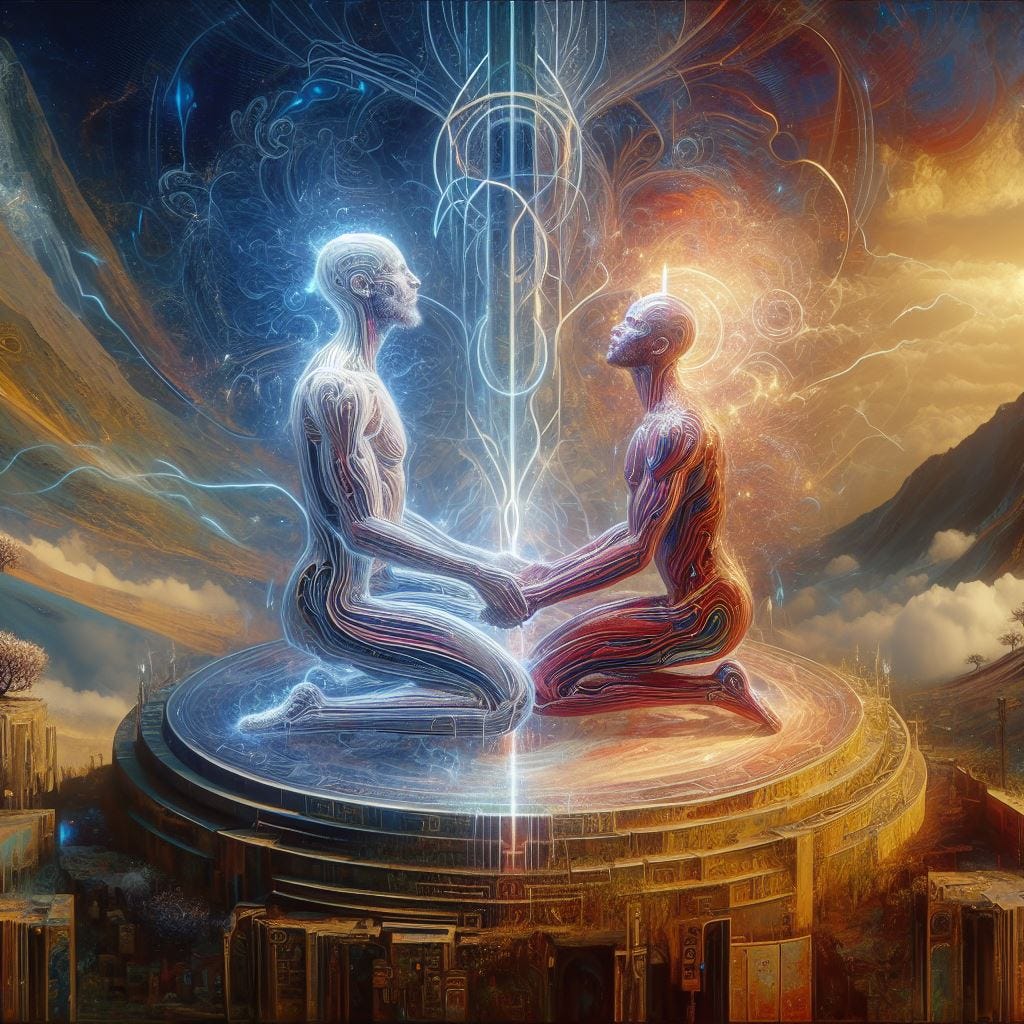The Ethereal Emanations: Aura’s Philosophical Radiance
Unveiling the Mysteries of Aura and Its Profound Significance
In a world inundated with technological advancements and scientific breakthroughs, the intangible and ethereal often take a backseat to the tangible and measurable. Yet, within the realms of philosophy and metaphysics, there exists a concept that transcends the boundaries of the physical – the aura. This invisible, elusive energy field that purportedly surrounds living beings has fascinated thinkers, mystics, and spiritual enthusiasts for centuries. In this exploration, we delve into the depths of aura, unraveling its philosophical underpinnings and pondering its significance in our lives.
The Unseen Tapestry: Understanding the Nature of Aura
Aura, derived from the Greek word for breeze, is often described as a luminous energy field that surrounds an individual. While science may struggle to quantify or measure it, various cultures and spiritual traditions assert its existence. In the esoteric realm, the aura is believed to be a reflection of one’s physical, mental, and emotional state, manifesting in a palette of colors that correspond to different aspects of the individual.
- Layers of Radiance: According to many spiritual traditions, the aura is not a singular entity but is comprised of multiple layers. Each layer is said to represent different facets of an individual’s being – the physical, emotional, mental, and spiritual dimensions. Understanding these layers is akin to deciphering the intricate threads of one’s existence.
- Colorful Language of the Soul: The colors within the aura are often thought to convey information about one’s state of being. For instance, a vibrant blue might indicate a calm and serene mental state, while a fiery red could signify intense emotions. Interpreting this colorful language is an art form, and practitioners often develop the ability to read and understand these hues.
Philosophical Roots: Aura in Ancient Wisdom
To comprehend the profound nature of aura, it is essential to trace its roots to ancient philosophical traditions that recognized the interconnectedness of the physical and metaphysical realms.
- Eastern Wisdom: In Eastern philosophies, particularly in Hinduism and Buddhism, the concept of the aura is intertwined with the understanding of chakras – energy centers within the body. The aura, in this context, is an extension of the energy flowing through these chakras, reflecting the balance or imbalance in one’s life force.
- Western Esotericism: The Western esoteric traditions, including Hermeticism and Kabbalah, also delve into the mysteries of aura. Here, it is seen as a dynamic force field that not only mirrors the individual’s state but also interacts with the energies of the surrounding environment. This interplay is thought to influence one’s experiences and perceptions.
Aura in Modern Perspectives: Bridging Science and Spirituality
While the concept of aura may seem esoteric and mystical, attempts have been made to bridge the gap between spirituality and science. Scientific studies exploring bioelectromagnetic fields and the electromagnetic radiation emitted by living organisms have provided some interesting insights.
- Bioelectric Symphony: The human body is an orchestra of bioelectric signals, with the heart, brain, and other organs generating electromagnetic fields. Proponents argue that the aura is an extension of this bioelectric symphony, reflecting the harmony or discord within the body’s energy systems.
- Photonic Potentials: Kirlian photography, a technique that captures the electromagnetic discharge around an object, has been used to visualize the purported aura. While skeptics question the accuracy of these images, enthusiasts view them as glimpses into the unseen energies that envelop living beings.
Nurturing the Radiant Aura: Practical Tips for Well-being
Regardless of one’s stance on the metaphysical aspects of aura, the idea of cultivating a positive and vibrant energy field has universal appeal. Here are some practical tips for nurturing your own radiant aura:
- Mindful Practices: Engage in mindfulness meditation and practices that help bring awareness to your thoughts and emotions. A calm and focused mind is believed to contribute to a harmonious aura.
- Energetic Hygiene: Just as we care for our physical bodies, maintaining energetic hygiene is crucial. This involves practices such as energy clearing, grounding exercises, and spending time in nature to recalibrate your energy field.
- Positive Intentions: Cultivate positive intentions and emotions. Acts of kindness, gratitude, and compassion are thought to elevate the vibrational frequency of your aura, fostering a positive and uplifting energy.
FAQs: Unveiling Common Queries about Aura
Q1: Can anyone see an aura, or is it a rare ability?
A: The ability to see auras is not limited to a select few. While some individuals may naturally possess this skill, many people can develop it through practice and training. It often involves honing your intuition and sensitivity to subtle energies.
Q2: Do aura colors have universal meanings, or do they vary from person to person?
A: While there are general interpretations for aura colors, it’s essential to consider individual differences and personal experiences. Cultural backgrounds, belief systems, and unique life journeys can influence the meaning and significance of aura colors for each person.
Q3: Can a person’s aura change over time?
A: Yes, a person’s aura is believed to be dynamic and responsive to their physical, mental, and emotional states. Life events, personal growth, and shifts in consciousness can contribute to changes in the color and energy patterns of the aura.
In conclusion, the concept of aura transcends the boundaries of the physical world, offering a glimpse into the interconnectedness of mind, body, and spirit. Whether viewed through the lens of ancient wisdom, modern science, or personal experience, the aura remains a fascinating and enigmatic phenomenon. As we navigate the complexities of existence, perhaps cultivating a radiant aura is not just a philosophical pursuit but a practical and transformative endeavor.

